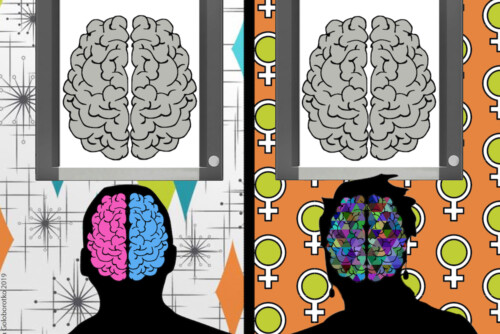The Arab Palestinian sports movement in the 1930s and 1940s was an integral part of this nationalist movement. As in other cases of colonized peoples, Arab-Palestinian men have been emasculated through their subjugation to British rule (since 1917), and their inability to halt Zionist immigration and the settler movement. 1 The emergence of an Arab Palestinian sports movement, which was almost exclusively male, was partly a reaction to this challenge to masculinity.
Like the Zionist sports movement, the nationalist-masculine character of the Palestinian sports movement was particularly exemplified through youth sports teams that were named after historically renowned Muslim and Arab military commanders, such as Khaled Ibn al-Walid and Salah al-Din. The rhetoric of the newly born Arabic-language sports media frequently emphasized the militaristic function of sports, as in the following example taken from the sports column of the newspaper Filastin in 1946: “One is forced to point out here that sports’ most important virtue is that it is creating a generation of youths and adults with healthy bodies, free from sickness, who do not complain of feebleness and weakness. There can be no disagreement that such a generation is the standing army of the state, which it will call upon in its hour of need.” 2
Another prominent aspect of the rhetoric of the Arabic sports press in the 1940s was the tendency to present sports as an important element in the modernization of Palestinian society, and “modernization” was frequently equated with adopting European institutions and practices. The European powers were explicitly presented in the sports columns as providing a paradigm of correct sporting activity and as offering a model worthy of replicating. Whether this replication should include limited participation of women in sports was a controversial issue. 3
Ironically, therefore, before Israel was founded in 1948, sports was assigned the role of redeeming the insecure masculinity of both Jewish European and Arab Palestinian men, and in both cases, the masculinizing sporting movement intended to shape these men in the form of an imagined model of a non-Semitic European man. In both sides of the conflict, the most popular game at this stage was already soccer, a sport codified in nineteenth-century Britain.
In 1947 dozens of Arab Palestinian sports clubs were active, most of them in cities. The large scale destruction arising from the 1948 war and the forced exile of urban elites brought an end to almost all these sports clubs. After the war, 160,000 Palestinians remained under Israeli rule. This small minority was mainly rural and was previously somewhat detached from the Palestinian sporting movement.
Although the Palestinians who remained in Israel received formal citizenship, until 1966 they were subjected to strict military rule, which severely curtailed their freedom of movement, speech, and livelihood. While both Palestinian women and men suffered from these conditions, they experienced them differently. The humiliation of the Arab men who were defeated in the war was multiplied by the loss of significant tracts of their land, which, before 1948 had been an important element in the masculine self-image of peasant men. 4 Furthermore, by preventing political organization and neutralizing public protest, the military regime eliminated the activity of Arab men in the public sphere and reduced the masculine role to providing for the family. 5
Those Palestinians who remained in Israel were mainly from the periphery, where before the 1948 war soccer was not institutionally played. Soccer was introduced to Arab towns and villages in a social context where Arab men were extremely vulnerable. Here, under exceptionally imbalanced conditions, the threatened masculinity of European Jewish men met the threatened masculinity of Arab Palestinian men.
A major principle in the policy of state authorities in the 1950s and 1960s was to prevent the emergence of a nationalist consciousness among the Arab Palestinian minority, and to attempt to develop a non-Palestinian local Arab identity for the new, unwanted Israeli citizens. The development of state-dependent sports clubs was one expression of these efforts. Hence, after 1948, sports was assigned not only the role of rehabilitating the image of Jewish men and consolidating a modern Hebrew national identity – but also used as a mechanism to facilitate the control and surveillance of the Arab Palestinian minority. 6
The State of Israel became the sponsor of soccer, and the game was one element in a set of strategies through which the state presented itself as a facilitator of modernity. The state functionaries, or more precisely, the functionaries of the Histadrut (General Federation of Labor Unions), who were assigned by the government to encourage the establishment of sports clubs in Arab villages, took advantage of the opposition of the elder rural leadership to the game in order emphasize their image as the bearer of modernity. This Arab Palestinian leadership did not welcome the idea of youth playing games like soccer. At best, they considered the sight of barely dressed young men purposelessly running around after a ball a waste of time, and at worst as, a licentious, “unmasculine” activity.
Ironically, for the younger generation, soccer provided an outstanding opportunity to rehabilitate their masculinity. Sports has a wide and flexible range of interpretations, and while for the elders the game was “play” (and therefore associated with childhood and immaturity), for the younger generation it provided an opportunity to test their masculinity in competition, shortly after their people suffered a catastrophic and humiliating defeat in the war.
- Katz, “Adam and Adama.” [↑]
- Filastin, February 7, 1946.[↑]
- Tamir Sorek, Arab Soccer in a Jewish State (Cambridge: Cambridge University Press, forthcoming, 2007).[↑]
- Katz, “Adam ad Adama.” [↑]
- Areen Hawari, “Men Under the Military Regime,” Adalah’s Review, 4 (2004): 33-45.[↑]
- Tamir Sorek, “Palestinian Nationalism has Left the Field: A Shortened History of Arab Soccer in Israel,” International Journal of Middle East Studies, 35, no. 3 (2003): 417-437.[↑]



